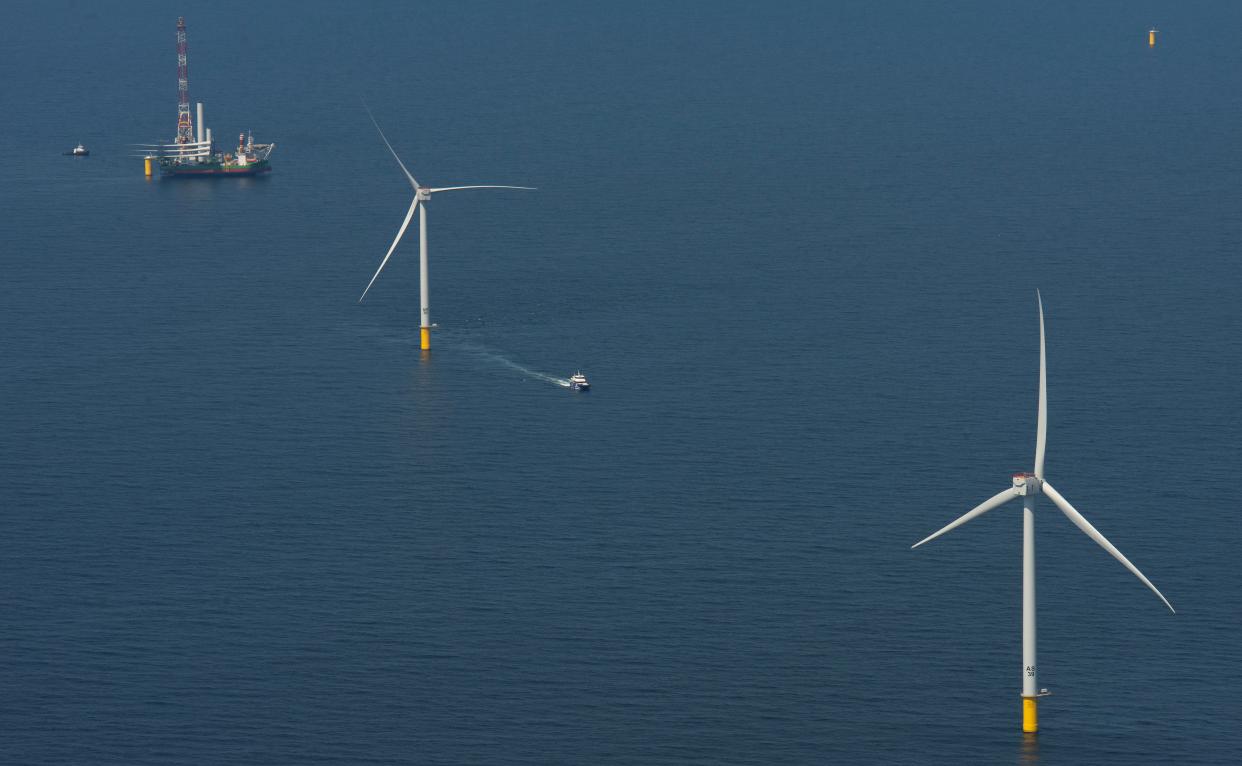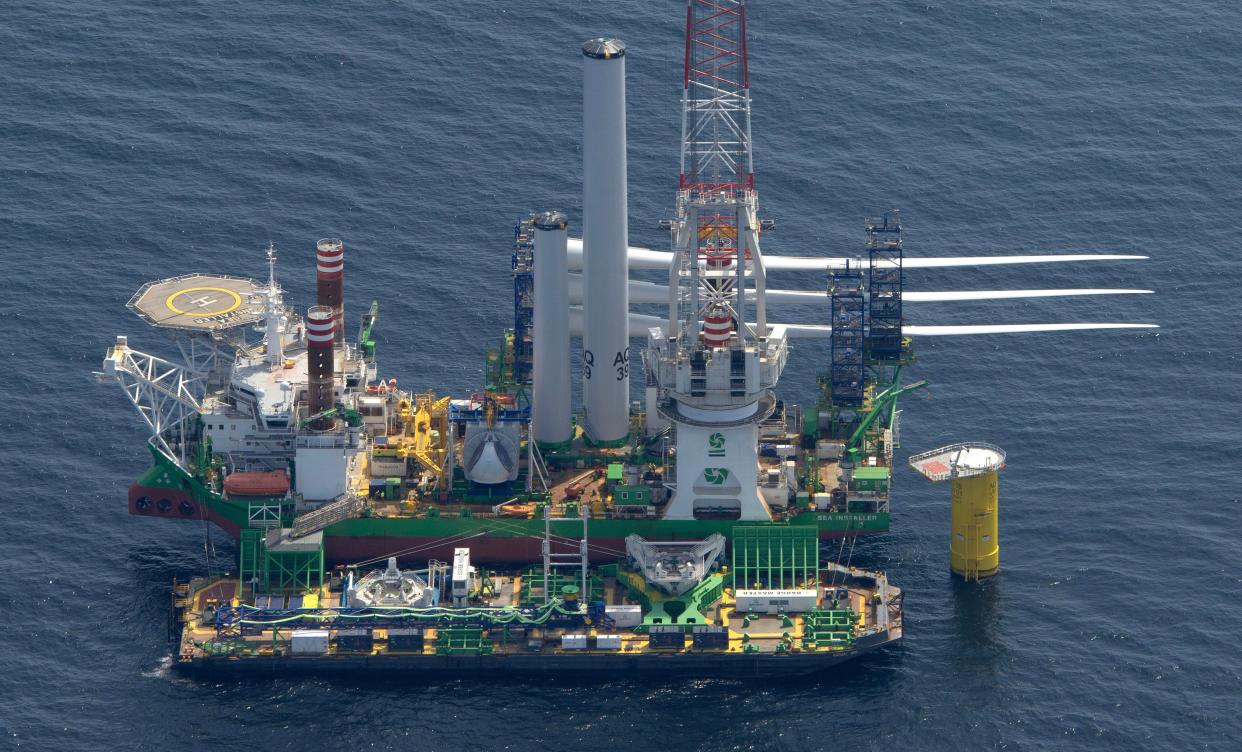'Steady progress.' Better weather on horizon for Vineyard Wind 1 turbine installation
Energy from the Vineyard Wind 1 project is slowly ramping up as turbines are added to the wind farm south of Martha's Vineyard and sending power to the New England electric grid by way of Covell Beach in Centerville.
The project currently has nine turbines — out of 62 planned — that have entered energy production or are going through the final stages of the commissioning process, said Vineyard Wind spokesman Craig Gilvarg.
With May's arrival and "far more ideal weather conditions" forecasted, the project is resuming installation of transition pieces in the project area.
"We are ready for a robust and productive turbine installation campaign in the months ahead and look forward to partnering with the project’s skilled union workforce to deliver more capacity from this historic project," Gilvarg said.
The turbines will be put to work churning energy from the winds that blow over the outer continental shelf 15 miles south of the Vineyard and Nantucket.

What's happened with the project so far this year?
Vineyard Wind 1, a joint venture of Avangrid and Copenhagen Infrastructure Partners touted as the nation's first commercial-scale offshore wind farm, has achieved a handful of milestones in the first five months of this year.
The company began testing the first of its turbines on Jan. 2 by delivering a brief spurt of about five megawatts of power to the mainland. By Feb. 21, the first five turbines were put into full service following a series of similar tests for each one, which is part of the commissioning process. At that time, they were constantly generating a combined 68 megawatts of electricity — enough to power 30,000 homes.
The end of February saw another four installed and awaiting commissioning, a tenth under construction, and the parts of an eleventh turbine getting prepared for transport to the site.
Executives have said they hope to have all 62 turbines operational by year's end, though that will depend on weather.
How much power will Vineyard 1 produce?
Eventually, Vineyard Wind 1 will produce 806 megawatts of power. That's enough to power more than 400,000 homes and businesses in Massachusetts.

Once it's complete, the project is expected to reduce carbon emissions by more than 1.6 million metric tons per year — equivalent to taking 325,000 cars off the road annually, according to the company.
How does offshore wind work?
The project generates power using General Electric Haliade-X turbines that are placed one nautical mile apart in the Vineyard Wind 1 federal lease area.
Each turbine includes a monopile that anchors it to the seafloor, topped by a transitional piece at the surface, then a tower topped by a nacelle and the blades. Each blade is 107 meters, or almost the length of a football field including the end zones (109.7 meters). The height of each turbine is about the same as three Statues of Liberty stacked up, (about 850 feet) from blade tip to the water's surface.
According to the U.S. Office of Energy Efficiency and Renewable Energy, "wind turns the propeller-like blades of a turbine around a rotor, which spins a generator, which creates electricity." The power is collected by an offshore substation. It is then transmitted through lines under the seabed, traveling at higher voltages than onshore because it is more efficient. Onshore substations put the power through a series of transformers to downgrade the voltage so it is compatible with the capacity of the distribution lines.
What makes the area south of the Islands so attractive for wind farms?
While offshore wind is just getting started in Massachusetts, the state is no stranger to wind power. There are more than 44 land-based wind farms in more than 30 communities, collectively generating more than 100 megawatts of power, according to the state Renewable and Alternative Energy Division.
But, when it comes to power-generating capacity, offshore wind is the real workhorse. In addition to the shallowness of the waters, Woods Hole Oceanographic Institution scientist Anthony Kirincich has noted that atmospheric conditions make the area south of the Islands especially attractive for energy production from wind power.
In certain places, the polar jet stream and the subtropical jet stream draw together and accelerate as everything moves from west to east. The wind farm area off Massachusetts is one place where this type of convergence happens, creating consistently strong winds.
Heather McCarron can be reached at hmccarron@capecodonline.com
Thanks to our subscribers, who help make this coverage possible. If you are not a subscriber, please consider supporting quality local journalism with a Cape Cod Times subscription. Here are our subscription plans.
This article originally appeared on Cape Cod Times: Nine turbines in, 53 to go at Vineyard Wind wind farm off Islands
